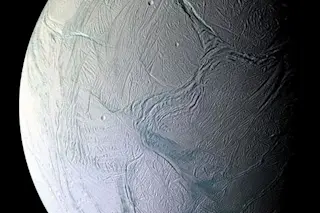Pluto’s atmosphere is hard to observe from Earth. It can only be studied when Pluto passes in front of a distant star, allowing astronomers to see the effect the atmosphere has on starlight. When this happened in 2016, it confirmed that Pluto’s atmosphere was growing, a trend that astronomers had observed since 1988, when they noticed it for the first time.
Now, all that has changed — Pluto’s atmosphere appears to have collapsed. The most recent occultation in July last year was observed by Ko Arimatsu at Kyoto University in Japan and colleagues. They say the atmospheric pressure seems to have dropped by over 20 percent since 2016.
First, some background. Astronomers have long known that Pluto’s atmosphere expands as it approaches the sun and contracts as it recedes. When the sun heats its icy surface, it sublimates, releasing nitrogen, methane and carbon dioxide into the atmosphere. When it moves ...














